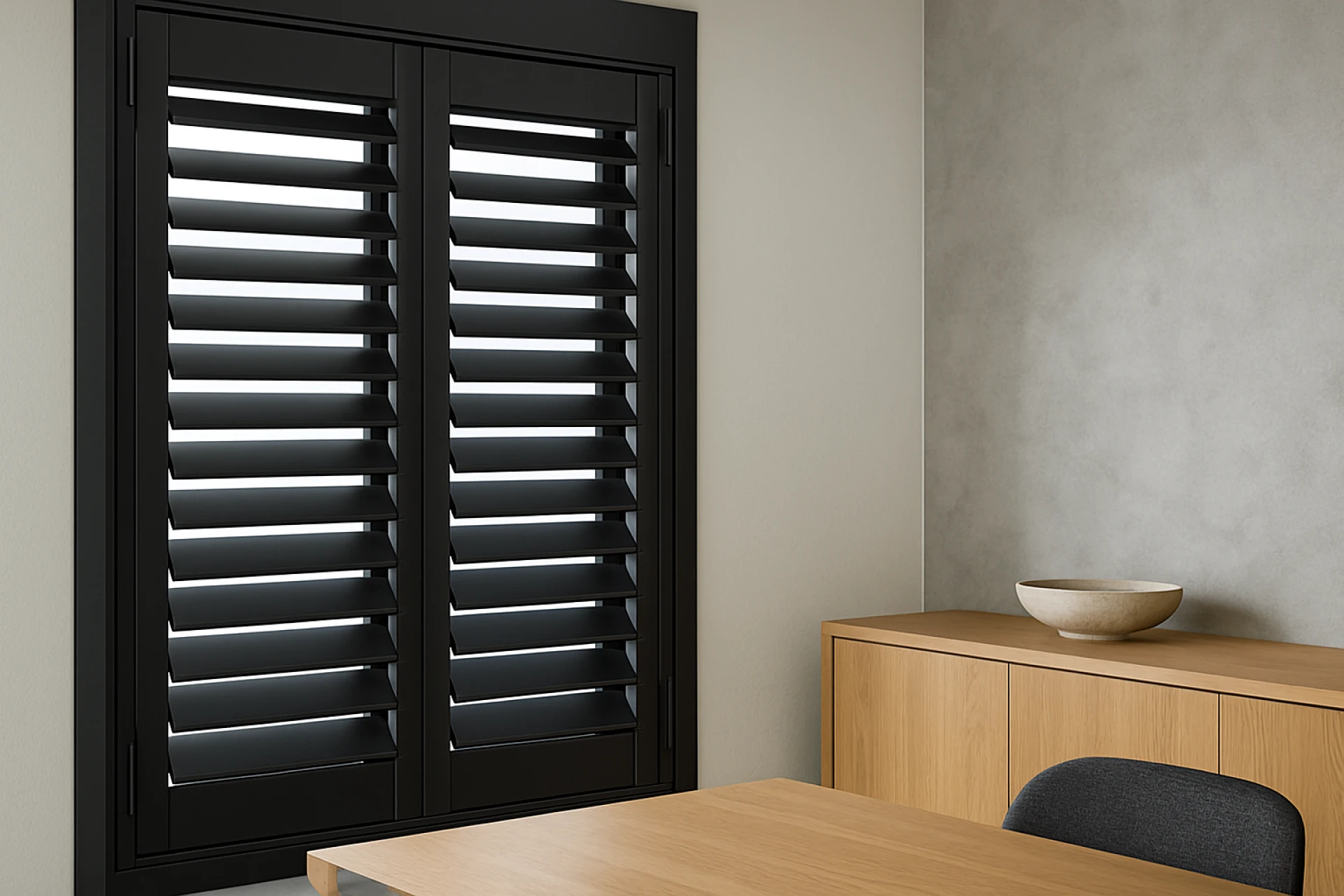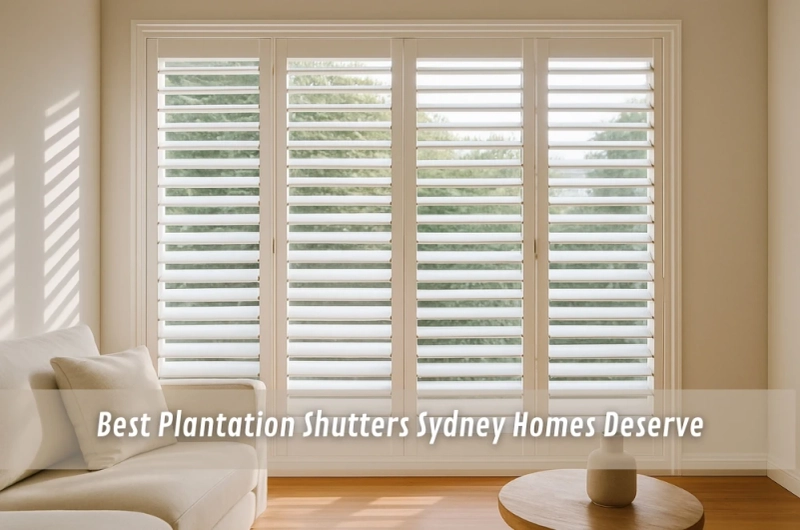Plantation shutters are more than a decorative flourish — they serve as a seamless blend of function and style that resonates with Sydney’s diverse home designs. For those navigating the wide world of shutters, it’s easy to feel swamped with options. That’s why many locals simply search for the best plantation shutters Sydney has to offer, aiming for a blend of privacy, airflow, and visual clarity without the clutter of heavy curtains.
Why plantation shutters match Sydney living
Sydney’s mix of coastal breezes, high-sun summers, and inner-city density creates a unique set of challenges — and plantation shutters happen to address most of them.
They’re effective for:
- Reducing glare while letting in soft light
- Offering adjustable privacy, especially for street-facing rooms
- Allowing ventilation without opening the entire window
- Complementing both historic and modern facades
I once stayed in a rental in Balmain where the shutters were tier-on-tier — I’d open the top louvres in the morning to catch light while keeping the lower panels shut for privacy. A small touch, but it changed the feel of the room entirely.
What makes a shutter design work — it’s more than just looks
Style plays a role, but effective shutters depend on their relationship to space and use. Material, louvre width, and frame type all matter. So does placement. Kitchen windows, for instance, deal with steam and occasional splashes, while bedrooms benefit from blackout-capable styles.
Popular choices include:
- PVC for moisture-prone areas
- Basswood for a warm, traditional finish
- Aluminium for outdoor zones or modern exterior aesthetics
And then there’s function — full-height panels vs. café-style, tilt rod vs. hidden tilt, inside vs. outside mount. These aren’t just stylistic decisions; they affect how light behaves in a room and how often you’ll interact with the shutter system.
Understanding shading as a passive cooling strategy
In a city that experiences seasonal extremes, finding ways to regulate indoor temperature without relying on artificial systems makes a tangible difference. Shutters can contribute to a building’s thermal performance, especially when positioned with intent. Shading solutions like shutters are a foundational element of passive design. They reduce summer heat gain when fixed externally and allow flexibility in transitional spaces like verandahs.
Rather than rely on constant mechanical ventilation or artificial light, homes that use smart shading achieve both comfort and energy balance naturally.
Day-to-day practicality: How shutters fit real routines
Beyond insulation or light control, plantation shutters also slot easily into daily living. They don’t bunch like curtains, don’t require tracks like blinds, and they hold up against pet tails, kids’ fingers, and the occasional bump.
They’re especially useful in:
- Bedrooms that double as study spaces
- Living rooms with layered lighting needs
- Laundry or bathroom windows where the risk of mould is higher
One practical benefit people don’t always mention? Easy cleaning. A quick swipe along the louvres with a cloth keeps dust at bay — no need to pull down fabrics or fiddle with chains.
Key advantages worth considering
It's worth stepping back and looking at what these shutters offer across the board. Some of the benefits of plantation shutters become more evident over time:
- Stable internal climate control across seasons
- Customisable light entry without fully exposing the room
- Increased control over airflow without needing window screens
- Visual continuity across multiple rooms or façades
These features help shape a quieter, more adaptable living environment — something particularly appreciated in busy urban areas or shared housing setups

Evolving styles and modern approaches
Plantation shutters have long been tied to coastal or Hamptons-style decor, but they’ve taken on a wider aesthetic role in contemporary builds. Today, more homeowners are seeking shutters not just for utility, but for visual contrast and mood.
Current modern shutter design ideas include:
- Charcoal or graphite finishes to frame light neutrals
- Wider louvres for a sleek, unobstructed view
- Recessed frames that blend into minimalist interiors
These stylistic updates allow shutters to coexist with open-plan designs, gallery walls, and mixed-material homes. Shutters don’t have to blend in — they can become the visual anchor.
What to avoid when selecting shutters
Getting the right shutter is about more than aesthetic match. Several small details, if overlooked, can lead to long-term frustration.
Avoid these common missteps:
- Installing in warped or uneven frames without adjustment
- Choosing narrow louvres that limit exterior views
- Overlooking external applications for Alfresco spaces
- Failing to match the hinge and frame colours to the existing palette
A well-selected shutter should feel intuitive, not intrusive. When measured and installed with care, it becomes a background feature that enhances, not demands, attention.
When installation matters more than you think
Aesthetics and specs aside, the real transformation often comes during installation. How the shutters are framed, mounted, and aligned affects not just the appearance, but usability. DIY is possible for some — but precision makes a big difference.
Key points to focus on:
- Frame depth and reveal compatibility
- Clean edge alignment, especially in visible areas
- Swing clearance for panels in tight spaces
- Easy louvre tilt access without obstruction
In older homes or those with timber window frames, extra time spent planning installation often avoids long-term issues with movement or wear. Smooth swing and silent tilt make shutters a satisfying part of daily life.
Final reflection: The quiet confidence of shutters
What stands out most about plantation shutters is their subtlety. They don’t scream for attention, yet they influence the entire room. From letting in the morning light to creating a quiet reading nook, they support, without dominating.
In a city like Sydney, where light is plentiful, privacy is valued, and style is personal, shutters strike a careful balance. They invite light, respond to breeze, and adapt to different room uses without changing shape or character.
So when someone wonders whether it’s worth investing in them, the answer isn’t just about aesthetics or practicality — it’s about creating a space that feels settled, layered, and quietly refined.


